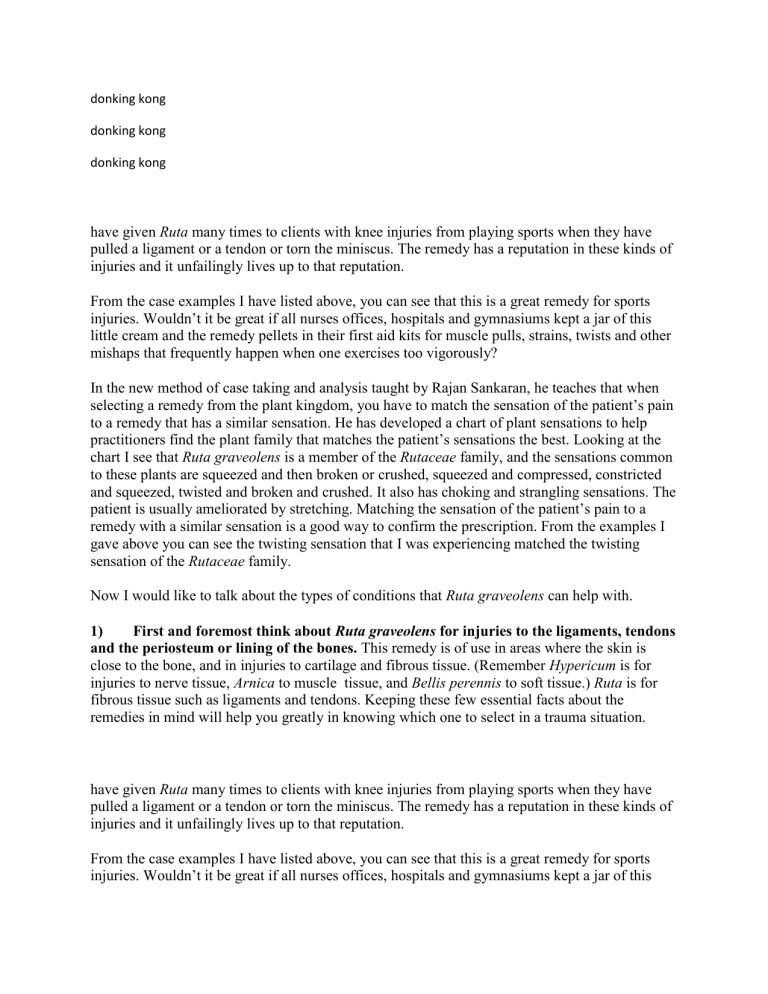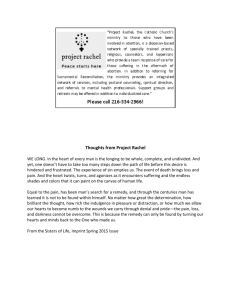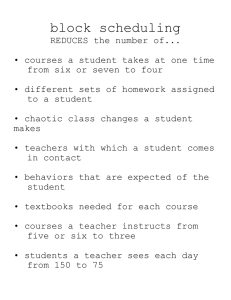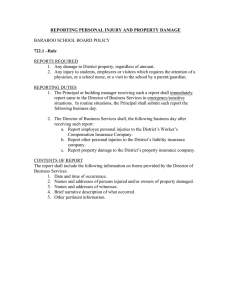
donking kong donking kong donking kong have given Ruta many times to clients with knee injuries from playing sports when they have pulled a ligament or a tendon or torn the miniscus. The remedy has a reputation in these kinds of injuries and it unfailingly lives up to that reputation. From the case examples I have listed above, you can see that this is a great remedy for sports injuries. Wouldn’t it be great if all nurses offices, hospitals and gymnasiums kept a jar of this little cream and the remedy pellets in their first aid kits for muscle pulls, strains, twists and other mishaps that frequently happen when one exercises too vigorously? In the new method of case taking and analysis taught by Rajan Sankaran, he teaches that when selecting a remedy from the plant kingdom, you have to match the sensation of the patient’s pain to a remedy that has a similar sensation. He has developed a chart of plant sensations to help practitioners find the plant family that matches the patient’s sensations the best. Looking at the chart I see that Ruta graveolens is a member of the Rutaceae family, and the sensations common to these plants are squeezed and then broken or crushed, squeezed and compressed, constricted and squeezed, twisted and broken and crushed. It also has choking and strangling sensations. The patient is usually ameliorated by stretching. Matching the sensation of the patient’s pain to a remedy with a similar sensation is a good way to confirm the prescription. From the examples I gave above you can see the twisting sensation that I was experiencing matched the twisting sensation of the Rutaceae family. Now I would like to talk about the types of conditions that Ruta graveolens can help with. 1) First and foremost think about Ruta graveolens for injuries to the ligaments, tendons and the periosteum or lining of the bones. This remedy is of use in areas where the skin is close to the bone, and in injuries to cartilage and fibrous tissue. (Remember Hypericum is for injuries to nerve tissue, Arnica to muscle tissue, and Bellis perennis to soft tissue.) Ruta is for fibrous tissue such as ligaments and tendons. Keeping these few essential facts about the remedies in mind will help you greatly in knowing which one to select in a trauma situation. have given Ruta many times to clients with knee injuries from playing sports when they have pulled a ligament or a tendon or torn the miniscus. The remedy has a reputation in these kinds of injuries and it unfailingly lives up to that reputation. From the case examples I have listed above, you can see that this is a great remedy for sports injuries. Wouldn’t it be great if all nurses offices, hospitals and gymnasiums kept a jar of this little cream and the remedy pellets in their first aid kits for muscle pulls, strains, twists and other mishaps that frequently happen when one exercises too vigorously? In the new method of case taking and analysis taught by Rajan Sankaran, he teaches that when selecting a remedy from the plant kingdom, you have to match the sensation of the patient’s pain to a remedy that has a similar sensation. He has developed a chart of plant sensations to help practitioners find the plant family that matches the patient’s sensations the best. Looking at the chart I see that Ruta graveolens is a member of the Rutaceae family, and the sensations common to these plants are squeezed and then broken or crushed, squeezed and compressed, constricted and squeezed, twisted and broken and crushed. It also has choking and strangling sensations. The patient is usually ameliorated by stretching. Matching the sensation of the patient’s pain to a remedy with a similar sensation is a good way to confirm the prescription. From the examples I gave above you can see the twisting sensation that I was experiencing matched the twisting sensation of the Rutaceae family. Now I would like to talk about the types of conditions that Ruta graveolens can help with. 1) First and foremost think about Ruta graveolens for injuries to the ligaments, tendons and the periosteum or lining of the bones. This remedy is of use in areas where the skin is close to the bone, and in injuries to cartilage and fibrous tissue. (Remember Hypericum is for injuries to nerve tissue, Arnica to muscle tissue, and Bellis perennis to soft tissue.) Ruta is for fibrous tissue such as ligaments and tendons. Keeping these few essential facts about the remedies in mind will help you greatly in knowing which one to select in a trauma situation.



